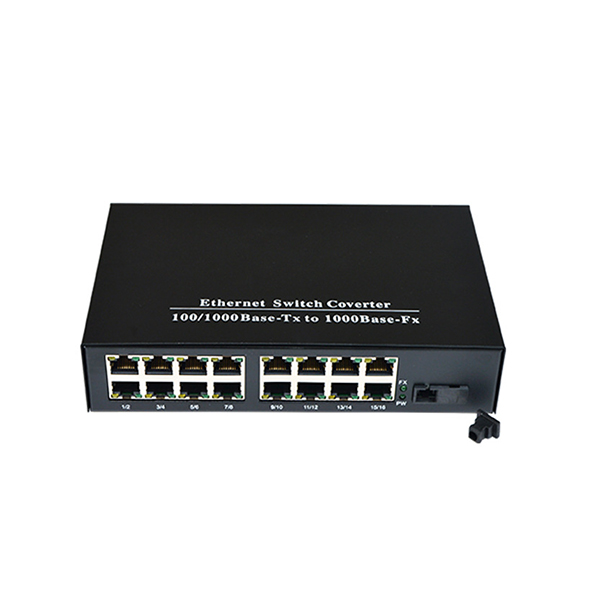
When it comes to fiber optic transceivers, people often unavoidably compare fiber optic transceivers with switches with optical ports. The following mainly talks about the advantages of fiber optic transceivers over optical port switches.
First of all, the price of fiber optic transceivers plus ordinary switches is far cheaper than optical switches, especially some optical switches will lose one or even several electrical ports after adding optical modules, which can make operators to a large extent Reduce upfront investment.
Secondly, since most of the optical modules of the switches do not have a unified standard, once the optical modules are damaged, they need to be replaced with the same modules from the original manufacturer, which will bring a lot of trouble to the later maintenance. However, there is no problem with the interconnection and intercommunication between equipment of different manufacturers of fiber optic transceivers, so once it is damaged, it can be replaced with other manufacturers' products, which is very easy to maintain.
In addition, fiber optic transceivers are more complete in terms of transmission distance than optical port switches. Of course, the optical switch also has advantages in many aspects, such as unified management, unified power supply, etc., which will not be discussed here.
Development Trend
In the continuous development and improvement of optical fiber transceiver products, users have also put forward many new requirements for the equipment.
First of all, today's fiber optic transceiver products are not smart enough. For example, when the optical path of the fiber optic transceiver is broken, the electrical port on the other end of most products will still remain open, so upper-level devices such as routers and switches will still continue to send packets to the electrical port, resulting in unreachable data . It is hoped that the majority of equipment providers can realize automatic switching on the optical fiber transceiver. When the optical path is DOWN, the electrical port will automatically raise an alarm, and prevent the upper-level equipment from sending data to the port, and enable redundant links to ensure uninterrupted services.
Secondly, the fiber optic transceiver itself should be able to better adapt to the actual network environment. In actual projects, the use of optical fiber transceivers is mostly in corridors or outdoors, and the power supply situation is very complicated. This requires equipment from various manufacturers to support ultra-wide power supply voltages to adapt to unstable power supply conditions. At the same time, due to the weather conditions of ultra-high temperature and ultra-low temperature in many areas in China, the impact of lightning strikes and electromagnetic interference is also real. All these have a very large impact on outdoor equipment such as transceivers. This requires equipment providers to pay attention to key elements. The use of devices, circuit layout and welding, and structural design must be carefully and strictly.
In addition, in terms of network management control, most users hope that all network devices can be remotely managed through a unified network management platform, that is, the MIB library of the optical fiber transceiver can be imported into the entire network management information database. Therefore, it is necessary to ensure the standardization and compatibility of network management information during product development.
The optical fiber transceiver breaks the 100-meter limitation of Ethernet cables in data transmission. Relying on high-performance switching chips and large-capacity buffers, while truly achieving non-blocking transmission and switching performance, it also provides balanced traffic, isolation of conflicts and Error detection and other functions ensure high security and stability during data transmission. Therefore, for a long period of time, optical fiber transceiver products will still be an indispensable part of actual network construction. It is believed that in the future, fiber optic transceivers will continue to develop in the direction of high intelligence, high stability, network management, and low cost.
Contact: Andy Huang
Phone: 0086-755-89239407
E-mail: sales@beskco.com
Add: No.3106,Longgang Avenue,Pidi Town, Longgang District, Shenzhen China
We chat